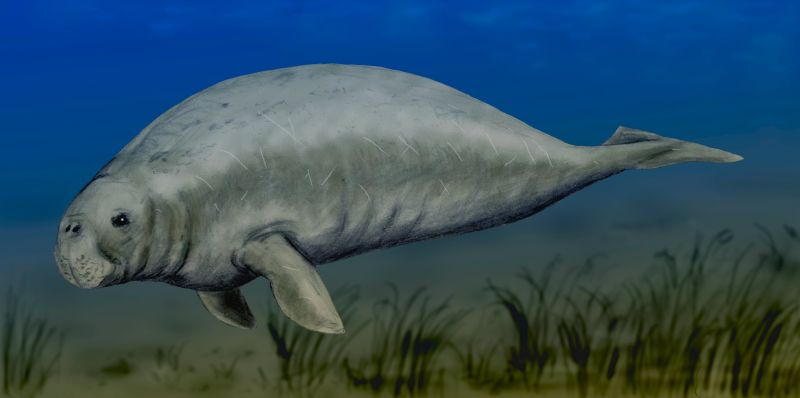- Halitherium
Taxobox
name = "Halitherium"
fossil_range = LateEocene to EarlyOligocene

image_width = 250px
regnum =Animal ia
phylum = Chordata
classis =Mammal ia
ordo =Sirenia
familia =Dugongidae
subfamilia =Halitheriinae
genus = "Halitherium"
genus_authority = Kaup, 1838
binomial = "Halitherium schinzi""Halitherium" was an early
sea cow that started in the lateEocene , then theOligocene . Its fossils are common inEurope an shales. Inside its flippers were finger bones that did not stick out. "Halitherium" also had very poorly developed back legs. Therefore, it had no external hind legs. It did, however, have a basicfemur , joined to a reduced pelvis. "Halitherium" also had elongatedribs to increaselung capacity to provide fine control ofbuoyancy .References
*"National Geographic Prehistoric Mammals" (
National Geographic ) by Alan Turner
*"Marine Mammals: Evolutionary Biology" by Annalisa Berta, James L. Sumich, and Kit M. Kovacs
*"The Beginning of the Age of Mammals" by Kenneth D. Rose
*"Encyclopedia of Marine Mammals" by William F. Perrin, Bernd Wursig, and J. G.M. Thewissen
*"Colbert's Evolution of the Vertebrates: A History of the Backboned Animals Through Time" by Edwin H. Colbert, Michael Morales, and Eli C. Minkoff
*"Origin of Species" by Charles Darwin
*"Classification of Mammals" by Malcolm C. McKenna and Susan K. Bell
*"The Rise of Placental Mammals: Origins and Relationships of the Major Extant Clades" by Kenneth D. Rose and J. David ArchibaldRelated species
*
Metaxytherium
*Rytiodus See also
*
Evolution of sirenians
Wikimedia Foundation. 2010.
